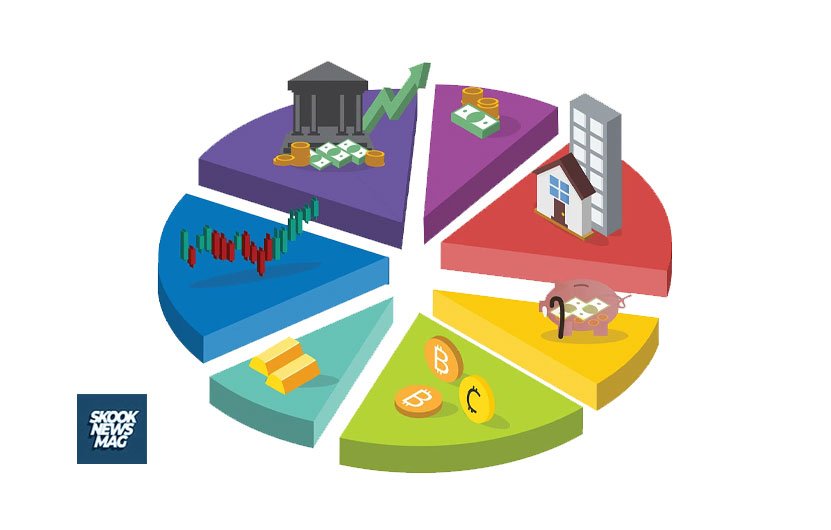Cryptocurrency And Its Impact On The Economy
The rise of digital currencies like Bitcoin, Ethereum, and Litecoin has brought about a significant shift in the traditional financial landscape. Cryptocurrency is redefining the concept of money and transforming the way people conduct transactions. The digital currency economy is booming, and it shows no signs of slowing down. The economic implications of cryptocurrency are enormous, and it is essential to understand the potential impact it could have on the financial sector. In this article, we will explore the impact of cryptocurrency on the economy, the emergence of the digital currency economy, and the potential challenges and opportunities that lie ahead.
The Rise of Cryptocurrency
The emergence of cryptocurrency has significantly impacted the global economy, revolutionizing traditional financial systems. Its popularity can be attributed to various factors such as its decentralized nature, security features, and potential for anonymity. This virtual currency has disrupted established financial institutions, and its effects have been profound and far-reaching.
Cryptocurrency has enabled peer-to-peer transactions, eliminated intermediaries, and reduced transaction fees. This disruptive technology has enabled individuals to have more control over their finances, and it has already impacted various industries such as online retail, real estate, and even healthcare.
The rise of cryptocurrency has also posed significant challenges for regulatory bodies and governments worldwide. The lack of standardization, security issues, and the potential for illegal activities have created concerns about cryptocurrency’s legitimacy. Nonetheless, the rise of virtual currencies continues to shape the economy, promising a future with endless possibilities.
Understanding Blockchain Technology
Blockchain forms the basis of cryptocurrency, which has disrupted the traditional financial systems. Its benefits are numerous and its potential to reshape finance is significant. Blockchain is a decentralized digital ledger technology that ensures secure and transparent transactions without the need for third-party intermediaries.
The benefits of blockchain technology include:
- Decentralization: Transactions secure and transparent without the need for intermediaries.
- Immutability: The data is permanent and unalterable, ensuring secure transactions.
- Security: Cryptography ensures that the data is secure and cannot be tampered with, making it difficult to hack or compromise the blockchain.
- Lower costs: The transaction fees are lower compared to traditional finance systems, making it cheaper to conduct transactions.
- Increased efficiency: Transactions are faster, reducing the settlement times to seconds or minutes instead of days.
Decentralized finance (DeFi) is the use of blockchain technology to offer financial services that are not controlled by centralized intermediaries such as banks or governments. DeFi brings the benefits of a decentralized financial system, including anonymity, access to global financial services, and lower transaction fees, compared to the traditional finance system. As blockchain technology continues to evolve, it has the potential to disrupt traditional financial structures and create a more inclusive and transparent financial system.
Cryptocurrency Market Influence
The cryptocurrency market has gained significant influence in the wider economy due to its volatile nature and potential impact on traditional markets. The value of digital currencies can fluctuate drastically, causing instability in the global financial system.
Bitcoin, the most widely recognized cryptocurrency, saw its value rise from $1 in 2010 to an all-time high of $63,000 in April 2021, before crashing to around $30,000 just two months later. Such volatility can have far-reaching repercussions, impacting not only investors but also businesses, governments, and the wider economy.
| Cryptocurrency Market Impact | Effect |
|---|---|
| Investment Returns | Cryptocurrency investors may face significant losses due to market instability. |
| Traditional Markets | Cryptocurrency volatility can destabilize traditional markets, such as stocks and bonds, due to interconnectedness. |
| Global Economy | Cryptocurrency instabilities can have a ripple effect on the broader economy, affecting international trade, monetary policy, and financial stability. |
While the cryptocurrency market may provide significant opportunities for investors and innovative businesses, its unpredictability and potential consequences on the economy necessitate close monitoring and regulation.
Economic Implications of Cryptocurrency
The adoption of cryptocurrency has significant implications for the economy.
Firstly, it disrupts traditional monetary policy as it operates outside of central banking systems. Digital currencies’ decentralized nature presents challenges to central banks in controlling money supply and inflation.
Secondly, the global financial stability can be impacted by cryptocurrency adoption. This is because of the potential for financial instability as the value of decentralized currencies, like Bitcoin, is determined by market demand and supply.
Finally, the use of digital currencies may create opportunities for financial innovation and inclusion. It can enable peer-to-peer transactions without intermediaries, like banks. Additionally, it can provide access to financial services for unbanked populations.
| Economic Implications of Cryptocurrency | |
|---|---|
| Challenges to traditional monetary policy | Decreased reliance on central banks |
| Impact on global financial stability | Potential financial instability due to market demand and supply |
| Opportunities for financial innovation and inclusion | Facilitation of peer-to-peer transactions and access to financial services for unbanked populations |
Digital Currency Economy Growth
The rise of cryptocurrency has led to the emergence of a digital currency economy, which is growing at an unprecedented rate. Proponents of digital currencies believe that they have the potential to drive a financial revolution, creating a new, decentralized economy that operates outside the traditional financial system.
| Benefits of a Digital Currency Economy | Drawbacks of a Digital Currency Economy |
|---|---|
|
|
Despite the potential drawbacks, the digital currency economy is showing no signs of slowing down. In fact, more institutions and individuals are entering the market, driving up demand for digital currencies and creating new investment opportunities. As the digital currency economy continues to grow, it is important for regulators to keep pace with the changing landscape, ensuring stability and security in this new, emerging frontier.
The Future of Cryptocurrency
As the digital currency economy continues to grow, the future of cryptocurrency holds immense potential in shaping the future of finance and business. The rise of decentralized finance and blockchain technology is expected to trigger a significant financial revolution, transforming traditional financial systems.
However, there are also challenges ahead, such as regulatory issues, technological innovations, and economic implications. The adoption of cryptocurrency could potentially disrupt traditional monetary policy, central banking, and global financial stability.
Nonetheless, the future of cryptocurrency is promising. The market is evolving rapidly, and innovative solutions are being developed. As digital currencies continue to gain mainstream acceptance, the financial sector is likely to witness significant transformations.
Regulation and Legitimacy
The effects of cryptocurrency on the economy have been significant, causing technological disruption in the traditional financial system. However, the potential risks and challenges associated with this disruptive technology have prompted calls for regulation and security. The lack of regulation has led to scams and fraudulent activities, undermining the legitimacy of the cryptocurrency market.
Implementing regulations will ensure stability and security for investors and market participants, including greater transparency in transactions and the prevention of illicit activities, money laundering, and tax evasion. The development and enforcement of clear regulations will legitimize the cryptocurrency market, enhancing its credibility and encouraging further growth.
Conclusion
The rise of cryptocurrency has revolutionized the financial industry and the broader economy. As we have discussed, the blockchain technology behind cryptocurrency has the potential to disrupt traditional financial systems, making them more secure, efficient, and accessible. However, this digital revolution also brings with it significant challenges, particularly in terms of regulatory oversight and financial stability.
It is essential that policymakers and regulators recognize the transformative impact of cryptocurrency and take appropriate measures to ensure the safety and stability of the financial system. This includes establishing clear guidelines around the use and trading of digital currencies and ensuring that they are subject to robust regulatory oversight.
Despite the challenges, the growth of the digital currency economy offers exciting opportunities for innovation and financial inclusion. As digital currencies continue to gain acceptance, we can expect to see significant growth in the industry, with new players emerging and traditional financial institutions adapting to keep pace.
Overall, the future of cryptocurrency is bright, and it will undoubtedly play a pivotal role in shaping the future of finance and business. As we navigate this digital revolution, it is crucial to remain informed and adapt to the changing landscape to ensure that we are well-positioned to succeed in the years to come.










